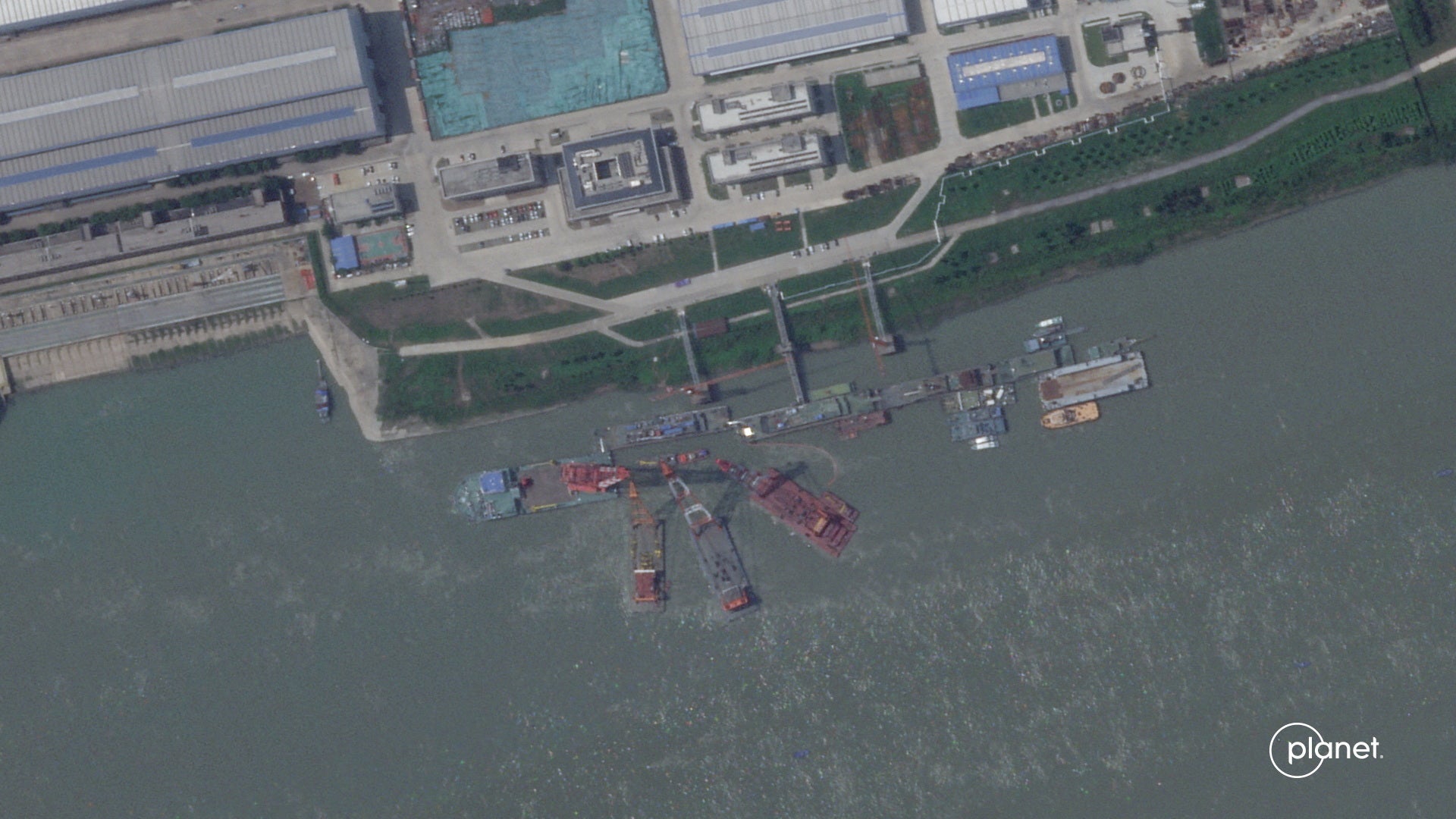China accused of trying to cover up major blunder involving its most advanced nuclear submarine
Naval experts and US officials say vessel appears to have sunk in port, and may have been carrying nuclear fuel at the time
Your support helps us to tell the story
From reproductive rights to climate change to Big Tech, The Independent is on the ground when the story is developing. Whether it's investigating the financials of Elon Musk's pro-Trump PAC or producing our latest documentary, 'The A Word', which shines a light on the American women fighting for reproductive rights, we know how important it is to parse out the facts from the messaging.
At such a critical moment in US history, we need reporters on the ground. Your donation allows us to keep sending journalists to speak to both sides of the story.
The Independent is trusted by Americans across the entire political spectrum. And unlike many other quality news outlets, we choose not to lock Americans out of our reporting and analysis with paywalls. We believe quality journalism should be available to everyone, paid for by those who can afford it.
Your support makes all the difference.China’s most advanced nuclear submarine sank in port while undergoing final sea tests earlier this year, American officials have claimed, in a blunder Beijing rushed to cover up.
The Zhou class vessel sank in May or June at the Wuchang shipyard near Wuhan, an anonymous Pentagon official told Reuters.
The Wall Street Journal reported on Thursday that the boat was likely carrying nuclear fuel when it went down.
The sinking, if confirmed, would mark a blow to the plans of the Chinese navy, already the largest in the world with over 370 ships.
China is vying to overtake the US as the dominant maritime power in the world and the production of a new generation of nuclear submarines is crucial to its strategy.
The US has designated China as its long-term “pacing challenge”.
A Chinese embassy spokesperson in Washington said they had no information to provide. "We are not familiar with the situation you mentioned and currently have no information to provide," they said.
The unnamed American official told Reuters that it was not clear what caused the boat to sink, or whether it carried nuclear fuel.
"In addition to the obvious questions about training standards and equipment quality, the incident raises deeper questions about the PLA’s internal accountability and oversight of China‘s defence industry, which has long been plagued by corruption," the official said, using an acronym for the People’s Liberation Army, adding that it was “not surprising that the PLA navy would try to conceal" the sinking.

Analysts noted changes in satellite imagery of the dock at the Shuangliu shipyard on the Yangtze River where the nuclear submarine was undergoing final checks.
Images from 10 March show the boat docked at the port and being prepared for its first sea trial, but images from 15 June do not show the submarine. Naval experts said they only see floating cranes in the later images, a possible indication that attempts were being made to salvage the vessel.
An image from 15 June showed the submarine either fully or partially submerged just under the river’s surface, surrounded by rescue equipment. Containment booms can be seen around the area, likely used to prevent any oil or other substances leaking from the vessel.
A subsequent satellite image on 25 August showed a submarine back at the same dock. It is not clear if this is the same vessel.
It is not known if the reported sinking caused any casualties.
The incident is likely to add to growing pressure on China’s military as the government presses ahead with a crackdown on corruption.
President Xi Jinping recently removed the top leadership of the Rocket Force, the military branch responsible for managing both conventional and nuclear missile operations.
The Chinese Communist Party has framed the crackdown on the Rocket Force as part of an anti-corruption drive, particularly targeting officials involved in military procurement.
The state-of-the-art Zhou class nuclear attack submarines have a distinctive X-shaped tail that aids manoeuvrability as well as advanced stealth technology to reduce noise and evade detection by enemy forces.
In recent years, Beijing has made the modernisation of its naval fleet a top priority. The PLA navy operates six nuclear-powered ballistic missile submarines, six nuclear submarines and 48 diesel-powered attack submarines, according to a 2023 China military power report.
In comparison, the US navy has 53 fast attack submarines, 14 ballistic-missile submarines and four guided-missile submarines. This force is expected to grow to 65 by 2025 and 80 by 2035, the US Defense Department has said.
According to the Congressional Research Service, the PLA navy operates 234 warships compared to the US navy’s 219.

Join our commenting forum
Join thought-provoking conversations, follow other Independent readers and see their replies
Comments